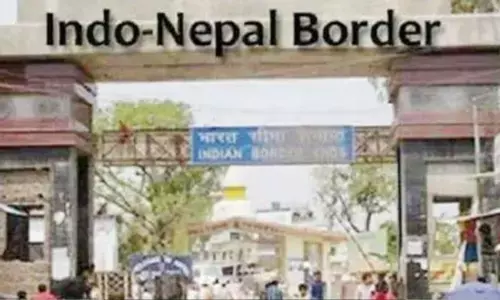Nature gives a warning yet again

Nature gives a warning yet again
The glacier tragedy in Uttarakhand has just proved the growing impact of the climate crisis. A survey done in 2019 found that the Himalayan glaciers are melting at an “alarming speed”.
The glacier tragedy in Uttarakhand has just proved the growing impact of the climate crisis. A survey done in 2019 found that the Himalayan glaciers are melting at an "alarming speed". Since long, local activists and writers have also blamed the intensive building along Uttarakhand's rivers and mountains of dams and hydropower infrastructure, which they argue is destabilising the ecologically fragile Himalayan region and resulting in more extreme weather events.
The Himalayas are a very young mountain range and are still in a formative stage. In recent years, scientists have monitored a notable increase in the rate of glacier retreat across the region as a result of climate change. There are 550 dams and hydroelectric projects in the state of Uttarakhand alone, with 152 big dam projects, and in the area affected by the February 7 flash flood, there are 58 projects along the rivers and their tributaries.
A new road is also being built into the mountains to ease access for tourists to Uttarakhand's famed Kedarnath temple, which has involved blasting into the rocks and the reported dumping of mud and rubble into the waters. In this Himalayan area, there are 10,000 big and small glaciers so we should be very careful about building any development projects in this ecologically fragile region, especially as climate change makes it even more fragile. The government wants to exploit hydropower for income and gives approval to all these big dam projects on every river, who we then see flouting environmental laws.
We can't say these projects are entirely to blame for this latest disaster, but they are definitely one of the contributing factors. The Wadia Institute of Himalayan Geology, had a different theory to the authorities on what caused the flooding. It was "more likely" that in recent weeks there had been a debris blockage in the river upstream, causing a lake to form and water to gradually build up. An avalanche had then "caused this lake to breach and the water to surge down the valley at speed", the Institute said. Climate change is exacerbating India's water crisis in several different ways, including an erratic monsoon cycle.
Water resources are becoming progressively scarce, and therefore, less dependable for generating electricity through large hydro projects. Countries such as Brazil, which has traditionally relied extensively on large hydro as a source of power, are now increasingly looking at alternatives due to unreliable precipitation. In India too, rivers such as the Ganga and the Cauvery are facing an unprecedented reduction in flow and volume. Many Himalayan rivers are projected to face a drastic reduction in flow due to climate change by the middle of this century.
Worse, it has been projected that the large-scale damming of the Himalayas will cause the submerging of hundreds of square kilometres of forest, resulting in the loss of hundreds of species of fish, plants and vertebrates. In India, large hydro projects have already been associated with some of the country's worst floods, deforestation, and submerging of forest lands. It has been recommended by many experts that unsafe and unproductive dams in India should be decommissioned. We should rethink. Many countries, such as the United States, Brazil, China and Peru, are now actively taking steps to decommission existing dams.







